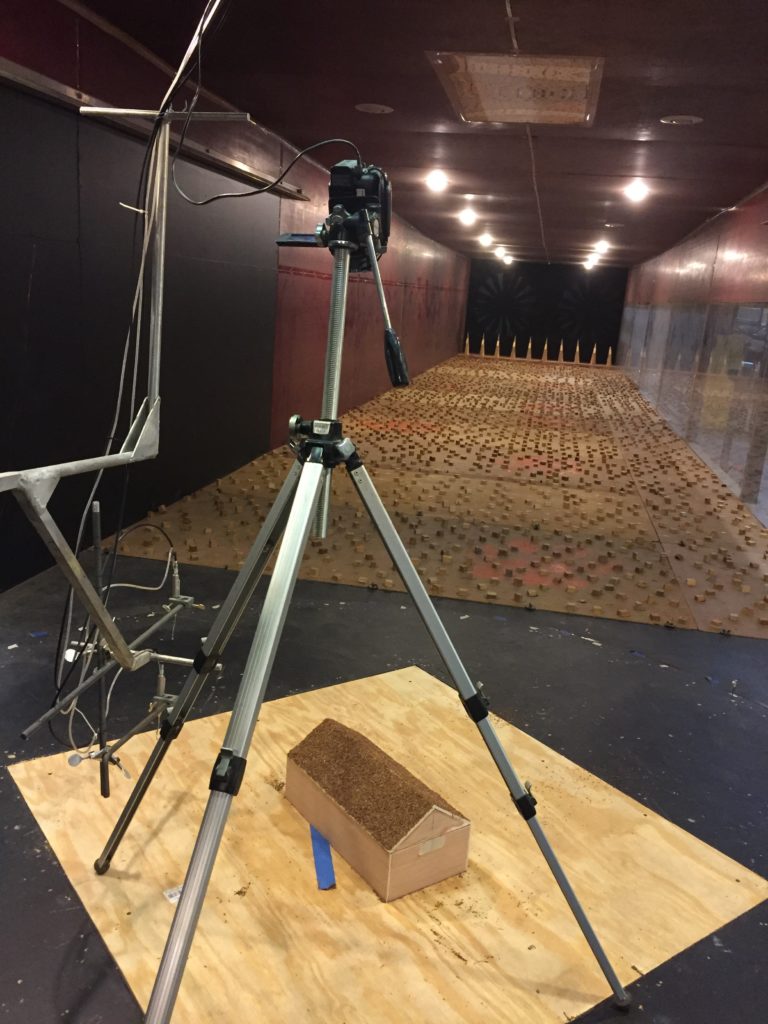Ember storms can lead to spot fires starting well ahead of the main fire front and are also one of the leading causes of home destruction. We have developed a detailed statistical description of the size and shape of embers produced by burning conifers. This was combined with data with a theoretical model for bent over fire plumes to develop a numerical model of ember lofting and transport. The wind tunnel was used to run a series of experiments to provide the first detailed model validation data set for assessing the quality of ember flight models.
This work is currently being extended by investigating the conditions under which embers land and remain on the structures. This NIST funded work will improve our understanding of the risk of structural spot fire ignition in Wildland Urban Interface (WUI) communities. The photo below shows the experimental setup in which a model building is covered in model embers and exposed to the wind. The test highlight regions of a rooftop on which embers can remain in contact with the roof and potential cause ignition.
